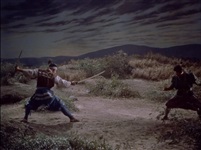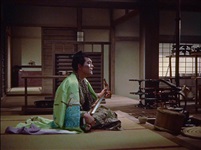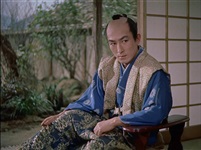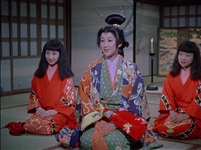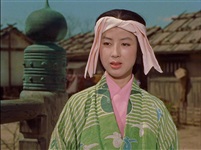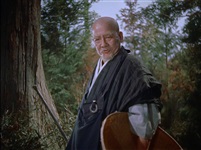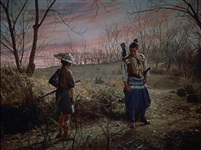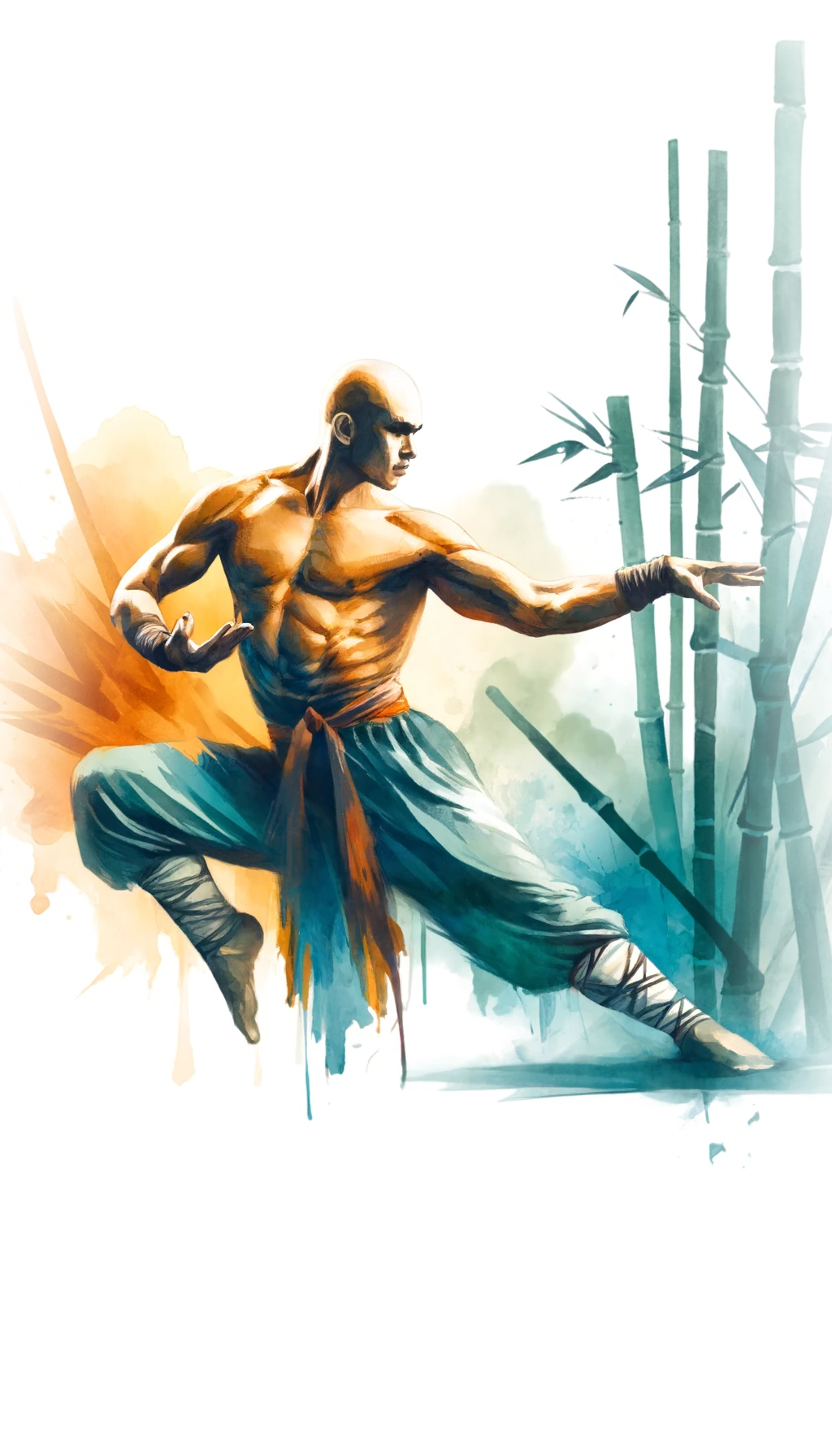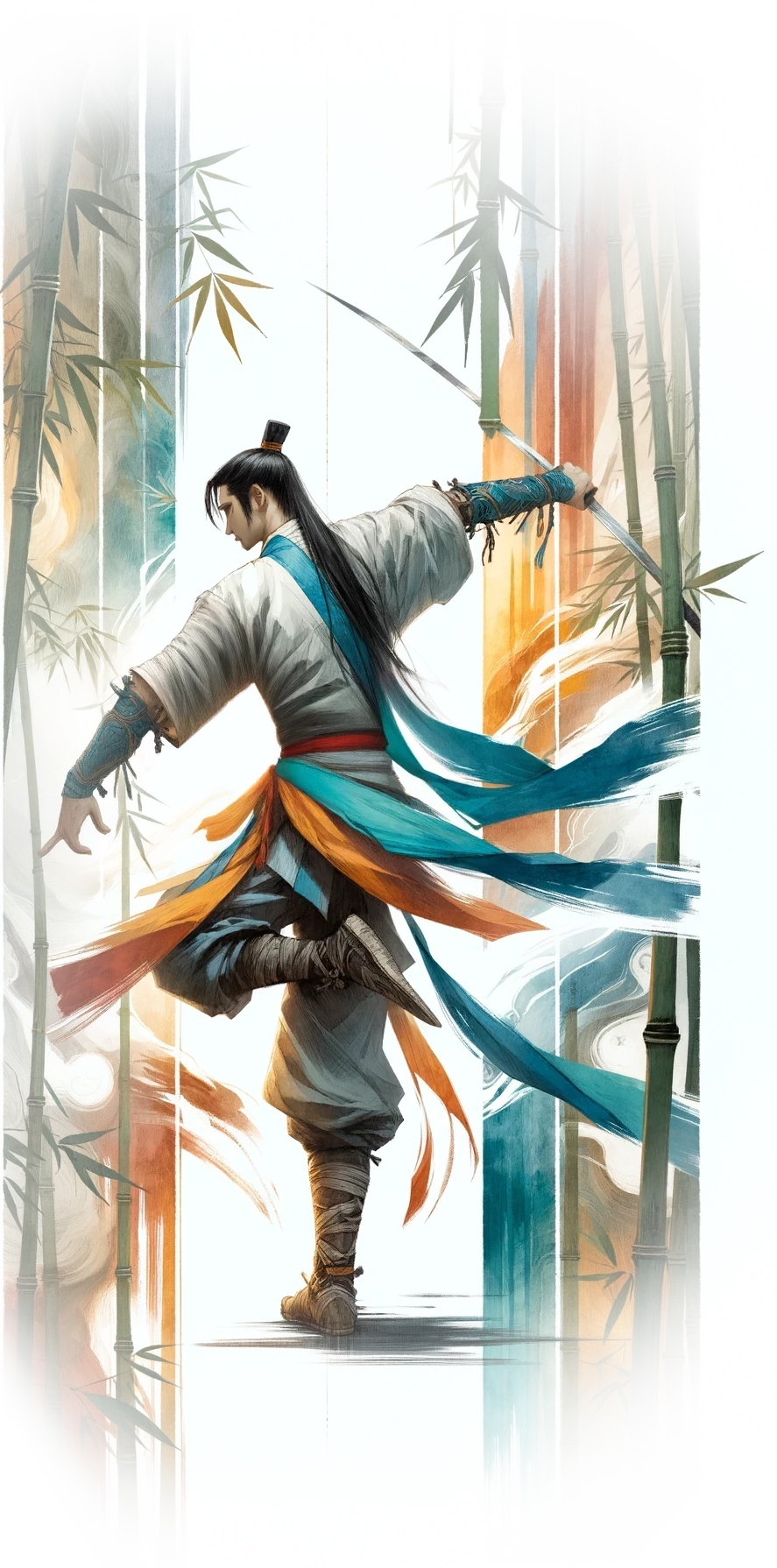Samurai II: Duel At Ichijoji Temple (1955)
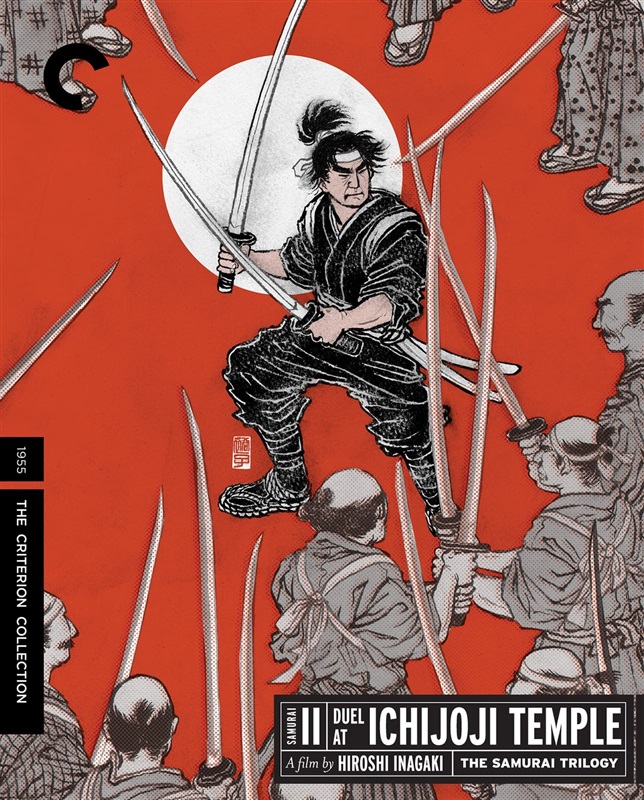
DUEL AT ICHIJOJI TEMPLE continues the story of Musashi Miyamoto, who has spent the years since his transformation wandering the land developing his swordsmanship. He has improved his skills and is no longer so full of rage, but he still relies too much on strength and has not fully mastered his emotions (or so says a passing monk).
Meanwhile poor Otsu has been waiting patiently by a variety of bridges for Takezo to return to her, and has travelled to Kyoto on a rumour he is heading that way. As it happens Akemi is also in Kyoto, where her mother is still trying to marry her off to somebody rich, and is also pining for Takezo.
DUEL AT ICHIJOJI TEMPLE falls a bit flat compared to its predecessor, with characters having less interesting arcs and in particular the strong female characters of the first film being reduced to weak, simpering one-dimensional stereotypes.
Musashi's own arc is also less well defined - he doesn't really change that much from the start of the film to the end. The middle film in a trilogy occupies a difficult position - characters and themes are already established in the first part but nothing can be concluded too finally because there's still a whole other film to come afterwards. That doesn't really excuse the weak writing on display here though.
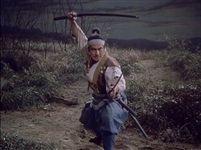
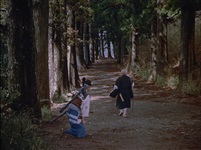
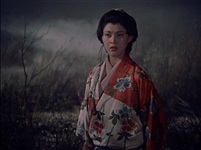
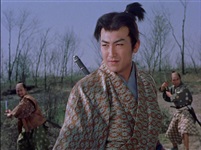
The film does at least look gorgeous, again using it's 4:3 aspect ratio to such good effect that you havbe to wonder why nobody makes films that shape anymore. It still has that classic elegance that is unique to films of its era.
There's more action this time around, as is appropriate to this stage of Musashi Miyamoto's life, and Toshiro Mifune ably demonstrates the difference that a disciplined warrior brings to a fight compared to a wild youth. Rather than charging in like a raging bull he waits for his opponent to open up an opportunity then strikes decisively.
It doesn't really make up for the blandness of the characters though - with the notable exception of newly introduced character Kojiro Sasaki, by far the most colourful in the film thanks to a charismatic performance from Koji Tsuruta. It's not really clear why he's actually in the film though, he doesn't play a central or pivotal role in the events that unfold, it really just feels like he's being introduced now to be used later.
It would be unfair to say that SAMURAI II is a bad film as it's still well made and features another charismatic Toshiro Mifune performance, but it doesn't have the same depth or intensity as the original.
Cast
Crew
| Director | |
|---|---|
| Writer | |
| Cinematographer |
